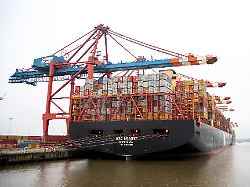CO2 prices for non-EU countries
EU agrees on protective shield for climate-damaging imports
12/13/2022 10:59 am
The EU agrees on a defense system for climate-damaging goods from third countries. The decision is part of the “Fit for 55” package, which aims to reduce CO2 emissions. Additional costs are likely to be incurred for some products in the near future, including many essential ones.
Step towards climate protection: To ensure that the EU’s efforts to reduce greenhouse gas emissions are not nullified by importing climate-damaging goods from third countries, negotiators in the European Parliament and the governments of the EU states have agreed on a so-called CO2 border adjustment system. This was recently announced by the current Czech Council Presidency. The clumsy name hides a defense system intended to oblige importers to buy pollution certificates for the import of certain goods. It is also intended to prevent companies from the EU from outsourcing their production to regions of the world that are even less ambitious than the European Union when it comes to climate protection.
The regulation will initially apply to products such as cement, iron and steel, aluminum, fertilizers, electricity and hydrogen. From October 2023, data on emissions from these goods will be collected.
The price of the certificates should correspond to the CO2 price that would have been paid if the goods had been manufactured according to the EU rules for pricing CO2 emissions. If non-EU manufacturers can prove that they have already paid a price for the CO2 for their goods production, they can have the corresponding costs offset. This should lead to comparable costs for imported goods and products produced in the EU.
EU manufacturers already have to pay for the emission of climate-damaging gases such as CO2 through certificates through the emissions trading system (ETS). In Brussels, the new mechanism is called CBAM – after the English abbreviation for CO2 border adjustment system (Carbon Border Adjustment Mechanism). In order for the CBAM to be implemented, the EU countries and Parliament now have to agree on a planned reform of emissions trading. Negotiations are scheduled for next weekend.
The EU measures for climate protection
Both projects are part of the so-called “Fit for 55” package of the European Commission. The proposed legislation should help EU countries reduce CO2 emissions by 55 percent by 2030 compared to 1990 levels and become carbon neutral by 2050. Measures for this include fixed emission targets for the member states, CO2 standards for cars and light vehicles, sustainable aviation fuels and also a climate social fund to be made available to disadvantaged households, micro-enterprises and road users.
There was a lot of encouragement for the package of measures, but also criticism. For example, land use and climate researchers complained in the journal “Nature“that, among other things, it declares biomass for energy generation to be CO2-neutral. In order to obtain this, however, a lot of space is required that could actually be used for food production. Food would have to be imported more. In order to meet the increased demand, forests would have to be used deforested to create more arable land, which means important CO2 storage and habitats are disappearing.
